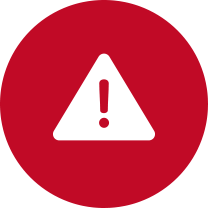Explosion safety
The new ATEX 114 and ATEX 153. Within Europe, the legislation in the area of explosion hazards has been split into two partial areas which complement each other well: the ATEX 114 Directive (2014/34/EC) for manufacturers of explosion-proof equipment (previous ATEX 95), and the ATEX 153 Directive (1999/92/EC) for users of equipment in potentially explosive surroundings (previous ATEX 137).
Equipment that is placed on the market after April 20th 2016 and that complies with the regulations of the new ATEX 114 must be marked with the “Epsilon x” logo in a regular hexagon. There is no requirement for a yellow background here. For that material, the supplier must provide a CE declaration of conformity.
When compared with the previous Directive 94/9/EC, in the new Directive 2014/34/EC the scope has not changed. The changes from the ‘old ‘ ATEX 95 Directive are mainly procedural.
Simultaneous to the change of ATEX 95 Directive the existing ATEX 137 Directive will unchanged receive a new name: ATEX 153. This Directive describes minimum regulations for improving the protection of the health of employees who may be endangered by explosive atmospheres. All businesses where an explosive atmosphere can arise through the use of hazardous substances must comply with this directive.
Structured Approach
When work involves inflammable substances (alcohol, acetone or ether), inflammable gases or inflammable solids (flour, sugar, sawdust), there is a danger of an explosive atmosphere. You must take the following steps:
- Draw up an inventory (write list, including dangers and information)
- Mark off danger zones. Note that the danger zones shall be up-to-date, not older than 5 years
- Take measures in these danger zones
- Educate your employees
- Draw up an explosion prevention document.
The explosion prevention document is an instrument for the employer to ensure that obligations are fulfilled in explosive atmospheres. The risk assessment and the measures taken by the employer (in response to the risk assessment) are shown in this document.




